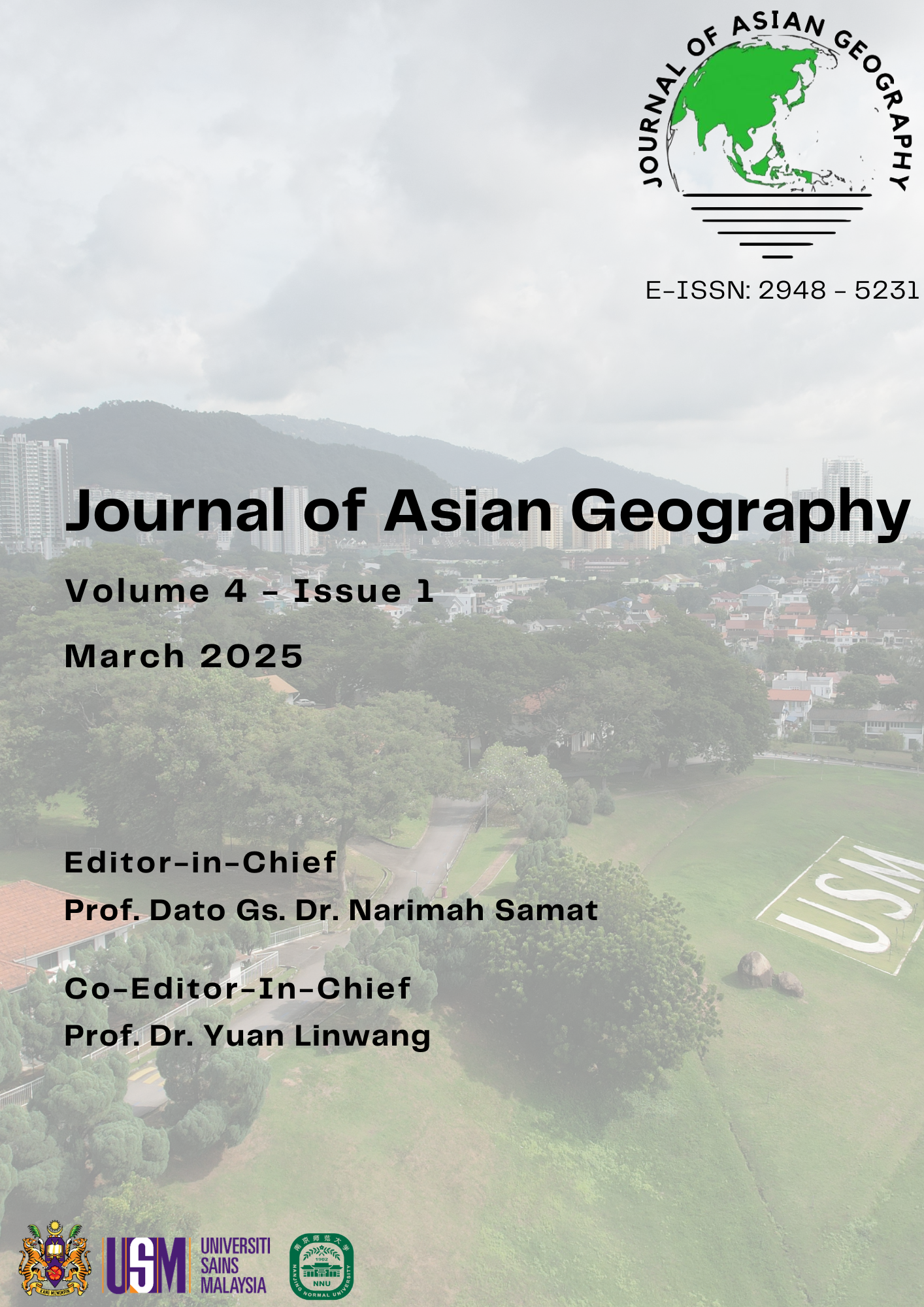Evaluating the Implementation of SDG 2: Zero Hunger at Universiti Sains Malaysia Using Geographic Information Systems
DOI:
https://doi.org/10.36777/jag2025.4.1.8Keywords:
Food Bank, GIS, Improvement, SDG 2, SuitableAbstract
Geographic Information Systems (GIS) provide powerful tools to evaluate food security, monitor agricultural productivity, and assess the impact of environmental and socio-economic factors on food systems. GIS can also be used to analyze spatial patterns of food accessibility by integrating spatial mapping to identify food insecurity hotspots and optimize resource distribution. Therefore, this study aims to evaluate the implementation of Sustainable Development Goal (SDG) 2: Zero Hunger at Universiti Sains Malaysia (USM) through the application of GIS. By utilizing QGIS 3.34.1, the study employs Kernel Density Estimation techniques to map and analyze the spatial distribution patterns of food banks across the USM campus. The research investigates the current distribution patterns of food banks at USM, assesses the impact of SDG 2 on students' quality of life, and identifies areas with potential for establishing additional food banks. Both quantitative and qualitative methods are used in this study, including direct observation, written data collection, and in-depth interviews with academic staff and relevant university stakeholders. The findings reveal that the existing food banks at USM are insufficient in number, unevenly distributed, and not adequately maintained, leading to limited access for students in need. Based on these findings, the study proposes several strategies to improve the effectiveness and accessibility of food banks on campus. These recommendations aim to enhance SDG 2 by addressing hidden hunger among students, improving the overall management and distribution of food, and fostering a sustainable campus environment. Ultimately, this research aligns with USM's commitment to higher education sustainability and aims to help the university maintain its standing as a leader in achieving SDG goals, particularly in the areas of hunger alleviation and social well-being.

Downloads
Published
Issue
Section
License
Copyright (c) 2025 Journal of Asian Geography

This work is licensed under a Creative Commons Attribution 4.0 International License.

